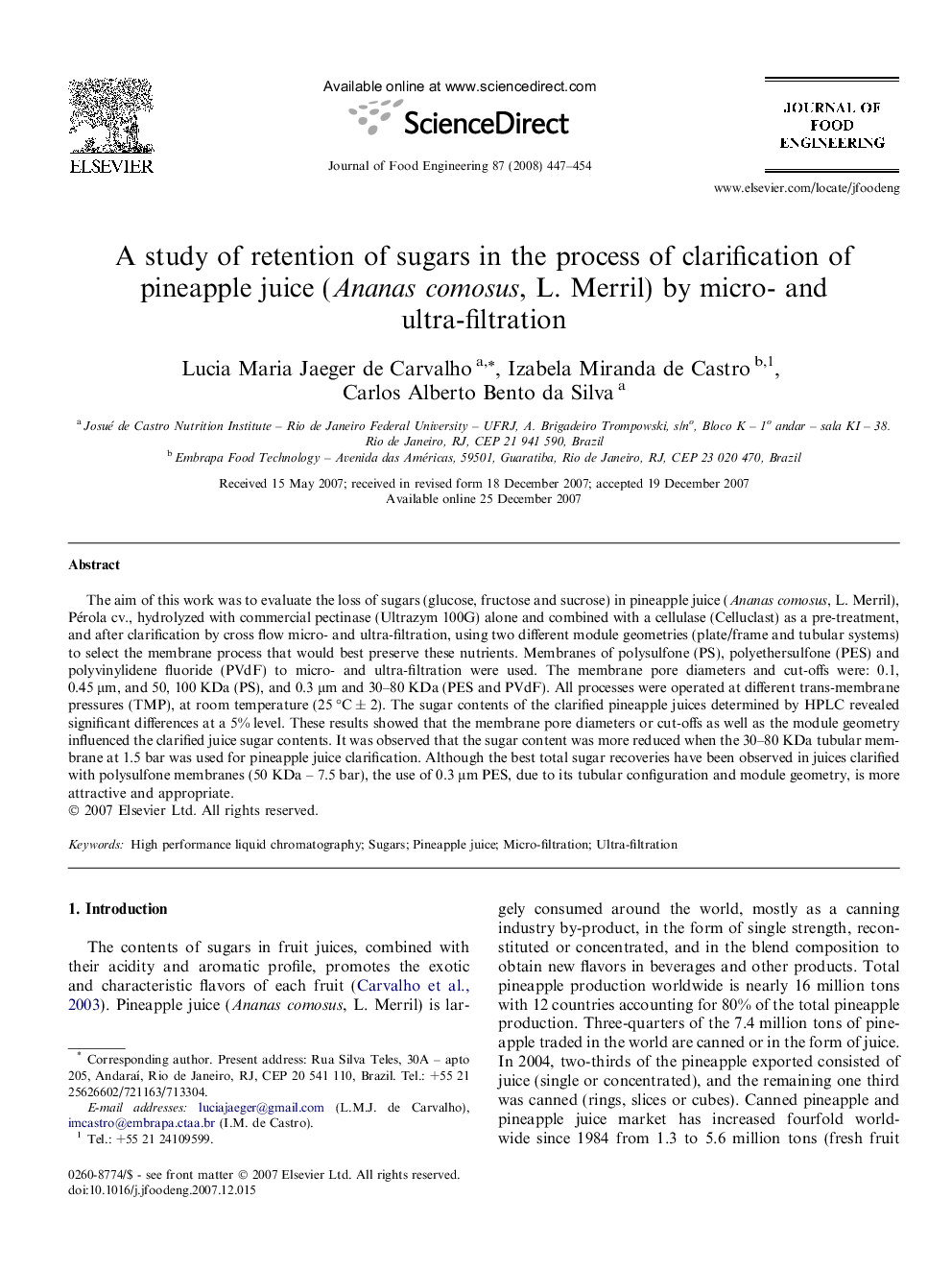| Article ID | Journal | Published Year | Pages | File Type |
|---|---|---|---|---|
| 225250 | Journal of Food Engineering | 2008 | 8 Pages |
The aim of this work was to evaluate the loss of sugars (glucose, fructose and sucrose) in pineapple juice (Ananas comosus, L. Merril), Pérola cv., hydrolyzed with commercial pectinase (Ultrazym 100G) alone and combined with a cellulase (Celluclast) as a pre-treatment, and after clarification by cross flow micro- and ultra-filtration, using two different module geometries (plate/frame and tubular systems) to select the membrane process that would best preserve these nutrients. Membranes of polysulfone (PS), polyethersulfone (PES) and polyvinylidene fluoride (PVdF) to micro- and ultra-filtration were used. The membrane pore diameters and cut-offs were: 0.1, 0.45 μm, and 50, 100 KDa (PS), and 0.3 μm and 30–80 KDa (PES and PVdF). All processes were operated at different trans-membrane pressures (TMP), at room temperature (25 °C ± 2). The sugar contents of the clarified pineapple juices determined by HPLC revealed significant differences at a 5% level. These results showed that the membrane pore diameters or cut-offs as well as the module geometry influenced the clarified juice sugar contents. It was observed that the sugar content was more reduced when the 30–80 KDa tubular membrane at 1.5 bar was used for pineapple juice clarification. Although the best total sugar recoveries have been observed in juices clarified with polysulfone membranes (50 KDa – 7.5 bar), the use of 0.3 μm PES, due to its tubular configuration and module geometry, is more attractive and appropriate.
